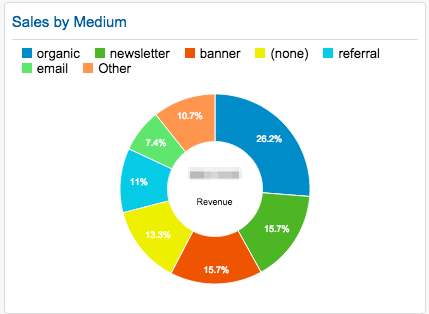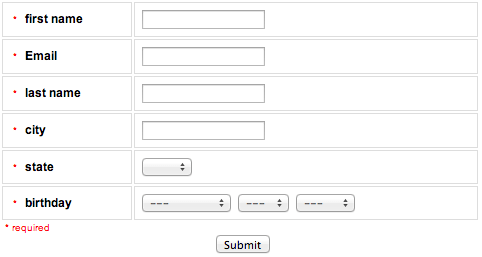I want to highlight one of the marketing techniques that’s working out pretty well for my company Yoast: email marketing.
Today’s post will outline why you should start with email marketing, if you’re not doing it already, and how to make sure you’re getting the biggest impact from your emails.
What is Email Marketing?
Email marketing comes in many shapes and forms. However, it’s basically this: every email you send to (possible) customers with the hopes of gaining or continuing their business. Most of the times, this comes down to newsletter marketing. You’re trying to sell your products or services through your daily/weekly/monthly newsletter.
However, for a lot of webshops, that’s not all the email marketing there is to it. At Yoast, we also send out emails when a customer’s license is about to expire, for example. And quite often, our email support is also a place where marketing happens.
Why You Should be Doing Email Marketing
For those of you not doing anything in email marketing yet, this one’s for you:
 Email marketing revenue by source
Email marketing revenue by sourceThese are the stats for this year so far. As you can see, 23.1% of this year’s revenue has come from either email or newsletter. The only portion that’s bigger is the organic portion, which means traffic from search engines.
To my mind, this should be more than enough to convince you to start doing email marketing. But if you feel it’s not, here’s some more to convince you:
 Content SEO eBook sales
Content SEO eBook salesThat’s the revenue for our new Content SEO Ebook. And guess when we released it? That’s right, on February 3rd. We announced the release on Facebook, Twitter, our own website and in our newsletter. So what worked best? Since the release of that eBook, over 75% of the revenue has come from our newsletters.
And to top it off: the Return on Investment (ROI) was over 22,000%, since we earned back over 221 times what we invested. This is the total ROI, since we sold a lot more than just our second eBook from those two newsletters.
So email really is a great marketing tool. It keeps your brand on the minds of your (potential) customers. On top of that, it makes sure your new product launches won’t go unnoticed; the release notice is actually sent to a whole bunch of people who have already expressed interest in your business.
How to do Email Marketing
Now that you’re convinced you need to be doing something with this email marketing thing, let me tell you how I think you should go about it. So I’ll try taking a ‘start-to-finish’ approach.
Building Your Email List
The first and foremost step to building your email list is to make it as easy as possible to sign up. And as easy as possible means, for example, cutting down on the sign-up form fields:
 Real-life newsletter signup example
Real-life newsletter signup exampleThis is a real live example we’ve encountered in our Website Reviews a while back. This is simply not how you do this. You should ask for just the most necessary, which is just the email address to be honest. You really do not need anything else. On yoast.com, we ask for just an email address and we’re getting over a 1000 new subscribers every week.
Next to keeping it simple, it also helps showing your sign-up form to people when they’re engaged on your website. We’ve done this by using a little box that slides up as the user scrolls past a threshold. If you’re using WordPress, there’s an awesome plugin by our friend Danny called Scroll Triggered Boxes that will make this easy as pie to set up. Other engaged visitors are people who actually buy your products, so be sure to have a sign-up in your checkout as well!
Of course there are a lot of other things you could try, such as a HelloBar, a static sign-up in your sidebar, a Twitter campaign for your email list. I do have to say though, the Twitter campaign wasn’t successful at all in our case. However, we try to keep it all as non-obtrusive as possible. We don’t want people to get annoyed by our sign-up forms, even though that would probably get us an even higher success rate.
Think About Deliverability
Once your email list starts growing, you should really start thinking about deliverability. What I mean by this is the percentage of emails that are actually getting to the people in your email list. Simply sending your newsletter from your WordPress admin won’t cut it, most of the time. You have a good chance your emails are actually ending up in people’s spam folders. And that’s a real shame, because people won’t even know you sent an email in the first place!
If you’re using a service such as MailChimp it’s easy enough to increase your deliverability. MailChimp has a simple checkbox to authenticate your campaign. There are four types of authentication and checking this box in MailChimp will enable all four of them by default. So my advice is to really start using an email service such as this. It doesn’t have to be MailChimp, as long as you’re sure to check for such deliverability options.
Keep Your Email’s Content Engaging
One of the most important things to do is to keep your email’s content engaging. People should want to read your newsletters or other emails. This comes down to keeping a healthy balance between promotional and informational content. This can be a fine line to walk, but it’s well worth the effort. Let me give you some tips how you can keep your readers engaged:
- Be personal: Keeping a personal tone tends to resonate more with your following and seems to increase click ratios as well.
- Interact with your following: You can do this by asking for feedback, giving special discounts or saying thanks (which can be combined with discounts).
- Make announcements: Whether this is about a new product or service, or about something noteworthy within your line of work (We usually highlight any big Google changes in our newsletter), keeping your following up to date and sharing news worthy items really helps increase their engagement.
- Share your knowledge: I feel this is probably the most important one. Sharing your knowledge makes for worthwhile emails for your following, but it also shows them you know what you’re doing. So not only do they get more informed, their trust in your brand will increase.
Make Your Emails Mobile Friendly
Mobile is really growing in the email market, with almost 50% of all newsletters being opened on mobile. So you should really make sure your newsletter is as mobile friendly as possible. A lot of the mailing services offer default templates that are mobile friendly and will scale down nicely. If you don’t want to spend too much time or money on your newsletter at first, this is a good option.
Another factor to take into account with mobile emails is your subject line. Since mobile screens are obviously not as wide as desktop screens, your subject lines might not actually fit the screen. This might not be a problem, but it’s a good one to keep in mind. It could be a good idea to test this.
A/B Test Your Emails
Since every company is different and therefore your clients probably differ a lot from ours, it’s important to test. Don’t just assume what’s been working for others will work for you.
All of the mailing services I’ve checked out offer A/B testing on the subject. And that’s a great way to test which subject line gives you the highest open rate. However, not a lot of them offer A/B testing on the content (body) of an email. And that’s obviously the best way to know how to optimize your text for a higher click rate.
While you’re at it, it’s probably also a good idea to test how often you should be sending emails to your customers. This is again a fine line to walk, since you’re in danger of sending it too often for at least a portion of your following. And while we’re talking timing, also think about the time you’re sending out your emails!
Tag Your Email Links
Some mailing services offer this as well, but we still tag the links in our emails by hand, because we want to do it a particular way: custom campaigns. As I also explained in that post, custom campaigns are a way to “tag” your links so you can easily find them in your Google Analytics. This way you know exactly what traffic and sales came from your newsletters. This is also the way I could tell you our ROI on our newsletters earlier in this post.
To Conclude
Next week I’ll be doing a post on email marketing for e-commerce websites. This will go into creating repeating customers and regaining lost customers using email.
For now, this is it! What do you think? Are you missing anything in here you think is really important? Let me know in the comments!
This post originally appeared on Yoast, and is re-published with permission.
Featured Image: Dean Fikar via Shutterstock




